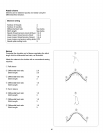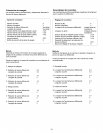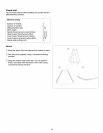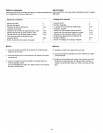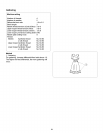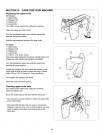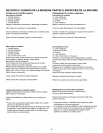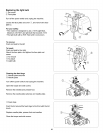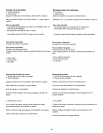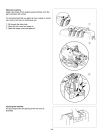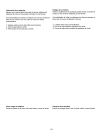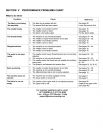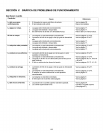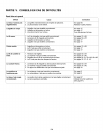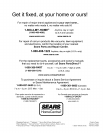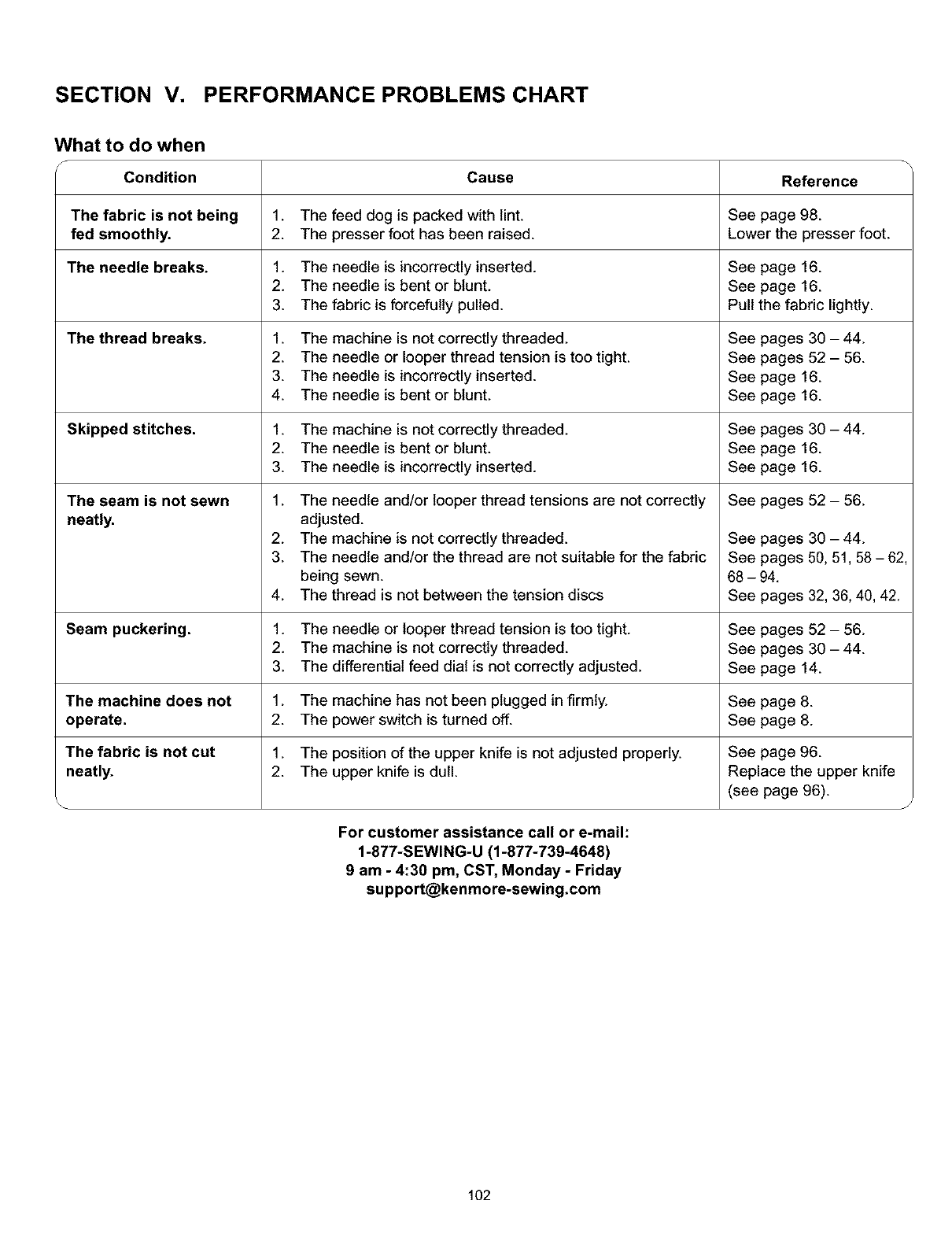
SECTION V. PERFORMANCE PROBLEMS CHART
What to do when
Condition Cause Reference
The fabric is not being 1. The feed dog is packed with lint. See page 98.
fed smoothly. 2. The presser foot has been raised. Lower the presser foot.
The needle breaks. 1. The needle is incorrectly inserted. See page 16.
2. The needle is bent or blunt. See page 16.
3. The fabric is forcefully pulled. Pull the fabric lightly.
The thread breaks. 1. The machine is not correctly threaded. See pages 30 - 44.
2. The needle or looper thread tension is too tight. See pages 52 - 56.
3. The needle is incorrectly inserted. See page 16.
4. The needle is bent or blunt. See page 16.
Skipped stitches. 1. The machine is not correctly threaded. See pages 30 - 44.
2. The needle is bent or blunt. See page 16.
3. The needle is incorrectly inserted. See page 16.
See pages 52 - 56.
The seam is not sewn
neatly.
1. The needle and/or looper thread tensions are not correctly
adjusted.
2. The machine is not correctly threaded.
3. The needle and/or the thread are not suitable for the fabric
being sewn.
4. The thread is not between the tension discs
See pages 30 - 44.
See pages 50, 51, 58 - 62,
68 - 94.
See pages 32, 36, 40, 42.
Seam puckering. 1. The needle or looper thread tension is too tight. See pages 52 - 56.
2. The machine is not correctly threaded. See pages 30 - 44.
3. The differential feed dial is not correctly adjusted. See page 14.
The machine does not 1. The machine has not been plugged in firmly. See page 8.
operate. 2. The power switch is turned off. See page 8.
The fabric is not cut 1. The position of the upper knife is not adjusted properly. See page 96.
neatly. 2. The upper knife is dull. Replace the upper knife
(see page 96).
J
For customer assistance call or e-mail:
1-877-SEWING-U (1-877-739-4648)
9 am - 4:30 pm, CST, Monday - Friday
support@kenmore-sewing.com
102



